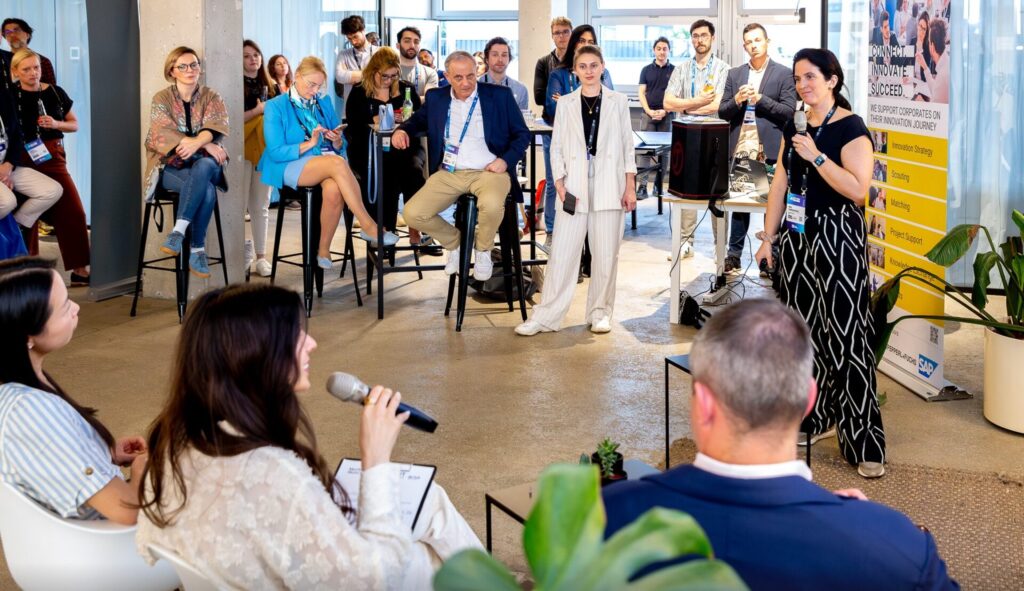
Michael Joe Cini
14th February 2023
Diversity, Equity and Inclusion in Data
The successful implementation of digital health and achieving the full potential and transformative power of digital health depends on our ability to harness the power of digital health data, for both primary and secondary use.
Alongside the availability and quality of data, there have been identified challenges in our ability to ensure equitable and ethical use of data and to make sure not to leave behind any potentially vulnerable population group. Bias in data is currently a major issue being focused on, making a talk on diversity, equity, and inclusion in data pertinent.
This important and timely topic was during one of our panel sessions. Moderated by Prof Georgi Chaltikyan, Professor of Digital Health at Deggendorf Institute of Technology, the session remains one of the best moments of Europe 2022.
Available to share with us their thoughts and wealth of knowledge, our panellists took turns to dig into the space and talk about different matters that matter. Vincenzo Varriale, Psychologist, Neuroscientist & Co-owner at Aequilibria Health Ltd, Oladimeji Ewumi, Founder of The Health and AI Writer, Hosna Salmani, PhD student in Health Information Management at Iran University of Medical Sciences, Tehran, Iran, Bryan Ogden, Founder at Ninjamoba Ltd, and Mary Akangbe, Founder & President Zenith Global Health were our panellists.
About Equity
Bryan: In my opinion, not everyone can leverage open data for its usefulness. You have to be capitalized to make any sense of data and put it through the analytics and to deploy it in an appropriate way. Therefore, to have diversity, equity, and inclusion in data, we need governance and intervention in this space so that large, already capitalized businesses don’t just scoop up all the open data. This is in line with the fulfilment of the SDGs. Also, concerning public data, I think the monetization of that data should be returned to the citizens to a certain extent.
What can be done about the imbalance in data quantity?
Already, there are inequities in data quantity with a huge per cent coming from North America and Europe while just a few per cent are received from countries in Africa, Asia, and Latin America. One would wonder if it’s possible to close the gap. Even if, then, how?
Mary: Frankly, the inequalities being currently witnessed have been around for quite long. To bridge the gap, we need to go back to basics. Before digital health and AI, these inequalities exist already in clinical practice. While we ignored them, these problems keep graduating and resurface with each advancement made in the sector. So, what do we do?
We need to start with clinical trials. Recently, Langs stated that any collaboration between UK, US, or any European Medicines Agency (EMA), there’s a need to specify the person involved, the amount, and the quality of data before it can be accepted for publication. Communication and finances also have to be critically looked at.
Another step to close the gap is to lower the bar. To include people of different backgrounds, different socioeconomic levels, and different literacy in data, there is a need to come down to their level. These factors have to be considered in our strive for equity.
What do we need to ensure Diversify, Equity and Inclusion?
Hosna: Everything now is about data. We should focus on data. We have to get to a level of integration in which data can be shared between patients, healthcare providers, institutions, and university hospitals, and used anywhere, at any time they are needed. We should have a data governance strategy and focus on the e-health strategy, looking not only at the benefits of these technologies but also the expenses behind them.
What’s your perspective on the current digital divide?
Vincenzo: What cannot be denied is the current digital divide. However, also what cannot be ignored is the diffusion of tablets and smartphones in healthcare. While elders may find it difficult to use digital health, this pervasive mobile technology is popular among them. In working with elders and people with cognitive impairments, one needs to create an environment that is adapted to the exigence of this population.
Even though these people should be one of the first and earliest consumers of digital health, they are mostly excluded when it comes to these new technologies. Although this is being currently worked on as newer technologies like virtual reality rollout.
Are we going to have a generational gap forever or not?
Oladimeji: Most likely, there won’t be so much of a divide. Recent research has shown that there is an increased number of the ageing population now interested in using a number of social robots and AI. In a way, this bridges the gap and divide in healthcare. Also, a lot of the ageing population are now into telehealth. These new technologies are made consumer-friendly, and all age groups will find them easy to use.






